What Mountain Bike Tyre Pressure To Use
What Mountain Bike Tyre Pressure To Use
Having the correct mountain bike tyre pressure will allow you to get the most out of your riding. There are several things to consider when you are choosing what mountain bike tyre pressure to use, such as the tyre’s casing, compound, size and if you are riding tubeless.
In addition to this, the terrain that you ride, the conditions and your personal preference will make a difference to what mountain bike tyre pressure to use.
How Your Tyre Pressures Affect Your Bike
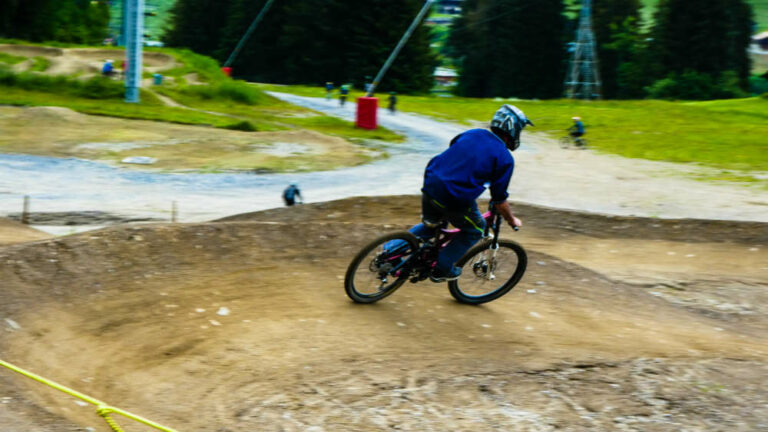
Grip
Lower tyre pressures give you more grip. This is because it increases the surface area of the contact point with the ground. Also, lower tyre pressures allow the tyre to conform to the surface it is rolling over.
Rolling Resistance
Higher tyre pressures make the tyre harder. This reduces the amount of grip, as the amount of friction between the tyre and the ground. But it does allow the tyre to roll easier. This makes it much easier for the tyres to roll, especially over hard surfaces. However, if you over-inflate the tyres, they will bounce over the bumps, which increases rolling resistance.
Tubeless vs Tubes
For mountain biking, I always recommend going tubeless. This has some very big advantages. The first advantage, is that it reduces your chance of getting punctures. The sealant (I recommend tyre yogurt) in the tyre, fills up puncture holes while you are riding. Therefore, most of the time you don’t realise that you have had a puncture. This is especially beneficial for people that ride very rough terrain, or for those that are racing.
The other advantage of going tubeless, is that you can run much lower tyre pressures. This is great if you want as much grip as possible. However, going with tyre pressures that are too low leaves your wheels vulnerable to damage.
If you decide to stick with inner tubes, you risk getting ‘pinch flat’ punctures, especially if you run low tyre pressures. Pinch flats happen when you get a large impact on the tyre, causing the tyre’s bead to pinch the inner tube, puncturing it.
Due to the likelihood of pinch flats, you may want to run a slightly higher pressure than to reduce the risk of puncturing your inner tube.
Considerations For Mountain Bike Tyre Pressure
Your Weight
Your weight influences what tyre pressure you should choose the same way it influences your suspension. Lighter riders can get away with lower tyre pressures, while a heavier rider will need their pressures to be slightly higher to get the same result.
The Terrain You Ride On
The terrain you ride will make a huge difference to your perfect tyre pressure. If you spend most of your rides on smooth hard-packed trails, you should be able to get away with running slightly lower pressures. Make sure that you have enough pressure to make sure your tyres keep their shape through the corners. If you mainly ride technical terrain with lots of rocks, roots and drops, you should run higher pressures to protect your tyres and rims.
It is also worth noting, that altitude has an effect on tyre pressures. If you pump up your tyres at the bottom of a mountain, they will get firmer the higher you go. So you may want to take this in to account, but remember they will get softer as you descend on your way home.
Your Riding Style
How hard you ride plays a part in what tyre pressures you use. If you hit big jumps or aggressively take the straightest line through every rock garden, you need to have higher pressures to protect your wheels. If your riding style is a little more sympathetic on the bike while being precise and ‘light’, you will be able to run lower pressures and benefit from the extra grip.
Your Tyres And Wheels
Tyre choice is a large consideration when it comes to pumping up your tyres, due to their casing. Do your tyres have tough dual-ply carcass designed for enduro or downhill riding, or are your tyres light weight with single-ply, that prioritise weight savings over puncture protection.
What Mountain Bike Tyre Pressure To Use
As I mentioned earlier, tubeless tyres allow you to run lower pressures without risking pinch flats. But, you still need to get the pressure right.
I could go in to some recommended tyre pressures for typical bike set ups with rider weights. However, a much better way, is to check out the Schwalbe Pressure Prof.

This is a calculator that takes into account all the variables to ensure that you get the right mountain bike tyre pressures. Of course, you may want to tweak the figures after a few rides to suit your personal preference.
You need to get the perfect balance and this will come with trial and error. But using the Schwalbe Pressure Prof is a good place to start.
This is where you need to remember that higher tyre pressures help support the sidewall of the tyre. This gives you better stability and resistance to the load they get around corners. Higher tyre pressures also give you increased protection for your wheels. But, don’t go too high, as grip will be reduced as the contact patch with the ground is reduced.
Low tyre pressures give you more grip, thanks to a larger contact patch. Also grip in the corners is improved as the softer tyre can conform to the surface. But, if you run the tyres too low, you are increasing the risk of damage to your wheels. Lower air pressures can also give you an unstable feeling when riding at speed and in the corners.
Tyre Pressure Gauges
The thing with pressure gauges, is that not all of them are particularly great or accurate. The pressure gauge I have on my pump is pretty useless, therefore I use a digital pressure gauge. But, even with this I can’t be 100% certain it is telling me the truth. But, the best thing to do, is to always use the same pressure gauge on your own tyres and look after it.
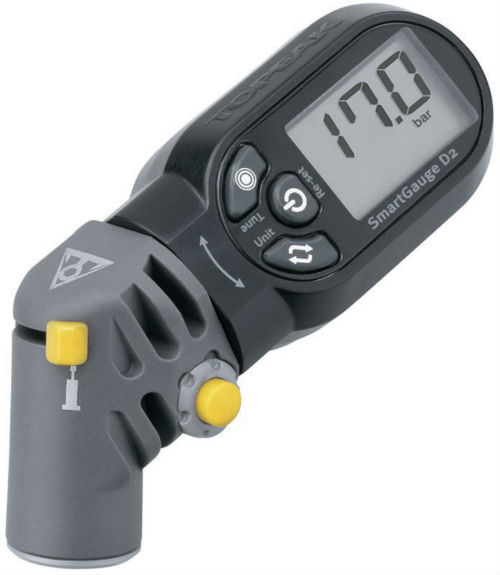
Getting The Right Mountain Bike Tyre Pressures With Trial And Error

As I said above, the Schwalbe Pressure Prof, is a good place to start, but how do you know if the pressures are right for you?
Get yourself a pump and a pressure gauge, and hit the trails. It is a good idea to head to a familiar trail that is quite short, that you can lap a few times. The trail should ideally have some flat corners, berms, bumps and some roots, or be similar to the type of terrain you normally ride. Don’t pick a trail that is too challenging, as you need to concentrate on the feeling you are getting from the tyres, rather than setting yourself a fun challenge.
It is a good idea to start with higher pressure, such as 28psi in the front and 30psi in the rear, to understand what it feels like.
Go for a ride and take in the following things:
- How much grip do you have in the corners?
- How does the bike feel over rough parts of terrain?
- Is the ride too harsh?
- Are the wheels getting hit when you go over rocks or take hard impacts?
The next thing to do is to drop the pressures by 2psi and lap the trail again. Keep doing this so you can get a good feel of what is happening. You will feel that the grip increases, as you drop the pressures. But, when the handling starts to feel vague and your wheels are hitting the ground, you know you have gone too far.
This is where you need to get the balance right. By having good handling and grip without damaging your wheels and getting punctures.
Once you have this dialled in, you can start playing around with different pressures, front and back. Generally, you can run less pressure in the front, which will give it more grip. This is something you can experiment with to suit your preferences.
What Mountain Bike Tyre Pressure To Use - Answered!
You may want to get the perfect mountain bike tyre pressures for your setup or just use the Schwalbe Pressure Prof. But, either way, you will soon realise that getting your tyre pressures right is the easiest and cheapest way to improve your bike and how it rides.
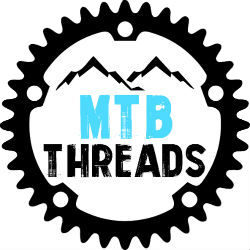
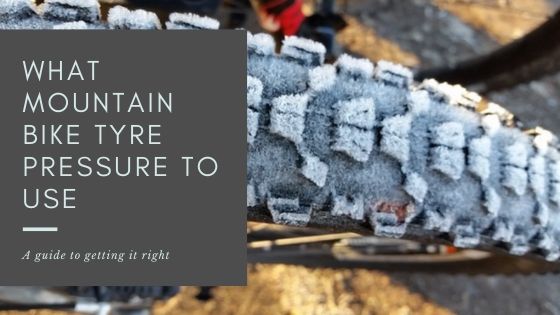
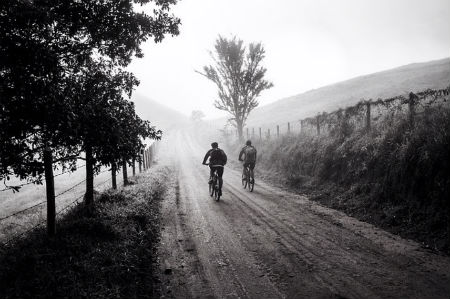
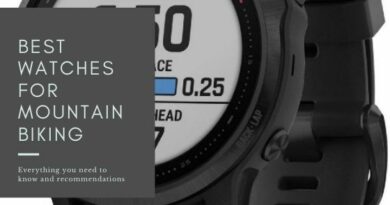
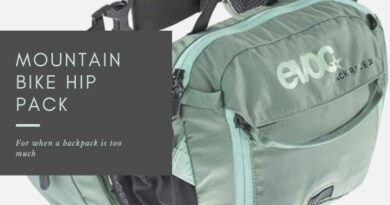
Pingback: What Is Bike Packing? - Everything you need to know
Pingback: Mountain Bike Equipment Beginners Need -